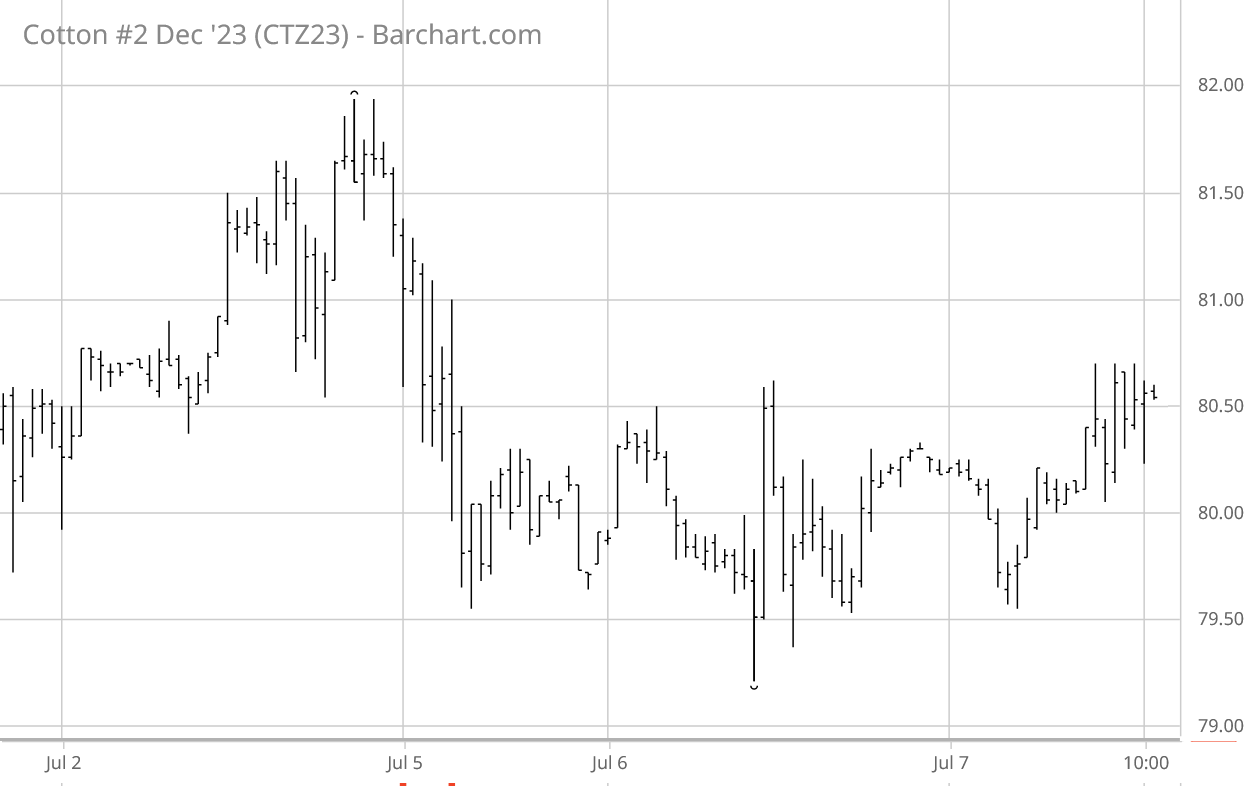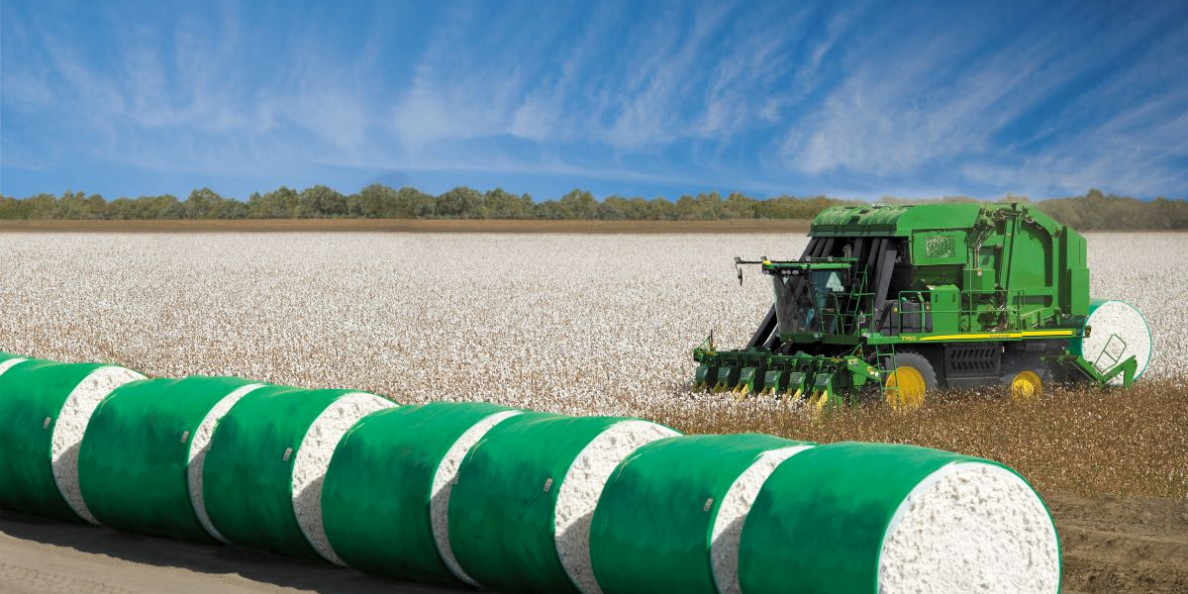For the holiday-shortened week ending Friday, July 7, ICE cotton futures gained two cents, then lost the same, and then finished the week in a narrow sideways band (see chart above courtesy of Barchart.com). Dec’23 ICE cotton settled Friday at 81.17 cents per pound, up 129 points on the day. Chinese cotton prices and the A-Index of world cotton prices also followed mixed patterns this week.
In other markets, CBOT corn and soybean futures were flat this week following their different reactions to the June 30 acreage report. KC wheat futures had a modest uptrend across the week. The U.S. dollar index was flat most of the week before tanking on Friday. Other macro influences (i.e., GDP, inflation, and interest rate policy) remain a potential headwind to longer term cotton demand.

Cotton-specific influences this week included the effects of the recent heat wave over Texas. This heat pattern was interrupted late this week with the return of moisture from several different weather patterns. Looking back, the excess moisture in April/May had mixed effects in northwestern Texas, followed as it was by wind and heat. The resulting production uncertainty is still clouding the U.S. cotton supply/demand and market outcomes. I am not expecting much clarity in the forthcoming July WASDE other than incorporating USDA’s lower cotton planted acreage number from their June 30 report. This effectively cuts several hundred thousand bales out of the new crop balance sheet.
On the other side of the world, the southwest monsoon rains are relatively early in their complete coverage of India, albeit a bit below average in their accumulation. U.S. export sales were seasonally decent but actual export shipments remained below the needed weekly average pace. Of course, the pattern of U.S. cotton sales and shipments can be “lumpy” if major buyers like China step in with large, late-breaking purchases. Meanwhile, USDA’s weekly summary of the U.S. regional markets continued to reflect mixed spot physical trading activity and very light to moderate demand, across the U.S. regions.
ICE cotton futures open interest followed a mixed pattern across the week. The regular weekly snapshot of speculative positioning (through Monday, July 3) reflected a switch to long speculative positioning from 2,257 new hedge fund longs, plus 6,551 covered hedge fund shorts, week over week.
For more details and data on Old Crop and New Crop fundamentals, plus other near term influences, follow these links (or the drop-down menus above) to those sub-pages.
Πηγή: TAMU

